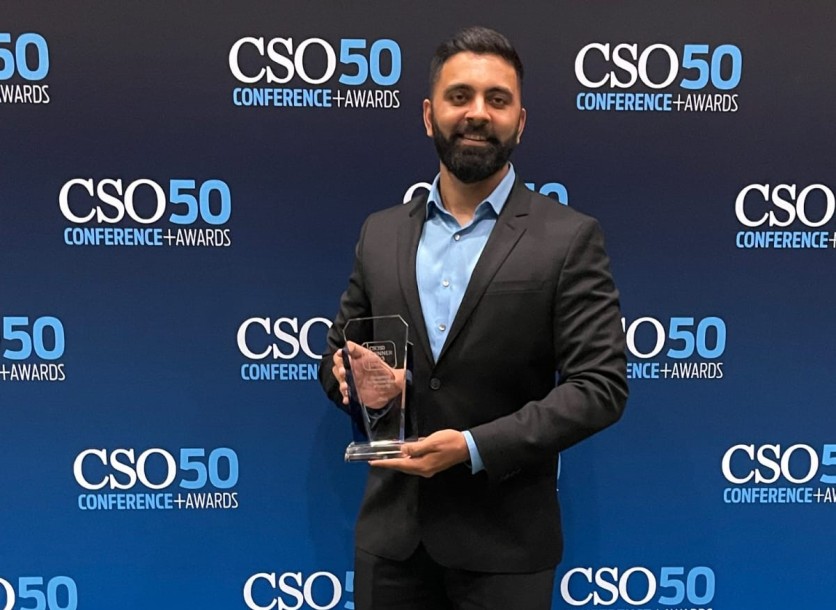
Amidst the dynamic and perilous cybersecurity ecosystem, human behavior continues to be a pivotal, though frequently underestimated, determinant in safeguarding organizational assets. Abhay Kshirsagar, a seasoned Technology Compliance Leader and the current Security and Compliance Leader at Cisco emphasizes the importance of building a culture of awareness and proactive response driven by people-focused strategies alongside cutting-edge technology.
Kshirsagar's journey into technology began with a fascination that took root in high school and grew into a passion during his undergraduate studies. With the rapid evolution of technology, he quickly recognized that businesses needed innovative approaches to stay secure while remaining compliant with industry standards. "The risks are greater than ever," Kshirsagar explains, "and the challenge of crafting effective strategies to protect data and build stakeholder trust is what inspires me daily. In cybersecurity, I believe that it's simply the right thing to do." This mindset has shaped his approach to technology compliance, security measures, and his leadership philosophy.
Navigating Challenges in Security and Compliance
Early in his career, Kshirsagar faced the challenge of entering the security field without extensive experience. His solution was to immerse himself in security projects, earning
certifications such as the Certified Information Systems Auditor (CISA) to prove his foundational knowledge. As he advanced, he noticed a gap in how security teams collaborated with engineering to implement practical solutions, an insight that led him to bridge the divide. "It's crucial to address the root causes of vulnerabilities," he notes, adding that effective cybersecurity must go beyond identifying threats to work actively with teams to implement timely, realistic solutions.
As a leader at Cisco, he now oversees control automation, customer assurance, and continuous monitoring, among other critical functions. His initiatives don't merely emphasize compliance; they make security a cornerstone of business success.
Kshirsagar's strategic implementation of such innovative measures within the operational security project was recognized with the prestigious CSO50 award. The CSO50 award honours 50 organizations for security projects and initiatives that demonstrate outstanding business value and thought leadership.
The Unique Focus on People, Process, and Technology
In cybersecurity, Kshirsagar advocates for a balanced approach across People, Process, and Technology. While technology is indispensable, he maintains that the "human element" remains the most crucial factor. "An organization can have the most advanced sensors and detection systems," he observes, "but a single, seemingly minor lapse by an employee can cascade into serious security incidents." This reality fuels his commitment to empowering people to become the first line of defence against cyber threats.
His previous projects included working closely with product teams to tackle security debt and guide secure coding practices. Together, they developed risk assessment roadmaps using tools like CIS Risk Assessment Methodology and CISA's Known Exploited Vulnerabilities (KEV) list, establishing a framework that equips engineers with both knowledge and practical strategies.
Elevating Security Culture Through Human-Centric Strategies
To instill a strong security culture, Kshirsagar underscores the importance of engaging the entire workforce through consistent and role-specific training. He recommends that companies establish a multi-layered approach to promote a culture of security. He identifies several key strategies to drive this initiative:
- Executive Sponsorship: Visible, top-down commitment to security efforts, highlighting security as a business imperative rather than merely a compliance measure.
- Regular Security Awareness Training: Frequent, engaging sessions tailored to employees' roles, covering essential topics like phishing and social engineering.
- Anonymous Reporting Mechanisms: Providing employees with confidential ways to report suspicious activities, promoting a transparent and safety-conscious environment.
- Recognition and Incentives: Rewarding employees who exemplify security-conscious behaviors, encouraging a positive approach to cybersecurity engagement.
- Security Champions: Appointing and empowering champions within teams to promote best practices and build peer-driven accountability.
With these practices, Kshirsagar aims to create an environment where employees recognize their role in organizational security. This approach helps mitigate the risk of human error and ensures that cybersecurity awareness is embedded in the company's day-to-day operations.
A Vision for the Future of Cybersecurity and Compliance
Looking ahead, Kshirsagar sees himself playing an even larger role in the world of cybersecurity and governance. As he envisions his future, he is driven to become a strategic advisor to organizations specializing in cybersecurity and GRC, expanding his reach in the SaaS space and driving transformative change. His long-term aspiration is to cement security further as a vital pillar of business, one that evolves with technological advancements without losing sight of the critical role people play in cybersecurity.
Abhay Kshirsagar's insights resonate widely in today's digital landscape, where people, processes, and technology must work in harmony to protect organizational assets. For more on his thoughts on security and compliance, connect with him on LinkedIn here.
Through his work, Kshirsagar exemplifies the necessity of balancing advanced technology with a people-first approach, ultimately demonstrating that a true security culture hinges on empowering employees to be active participants in safeguarding the organization.
ⓒ 2025 TECHTIMES.com All rights reserved. Do not reproduce without permission.




